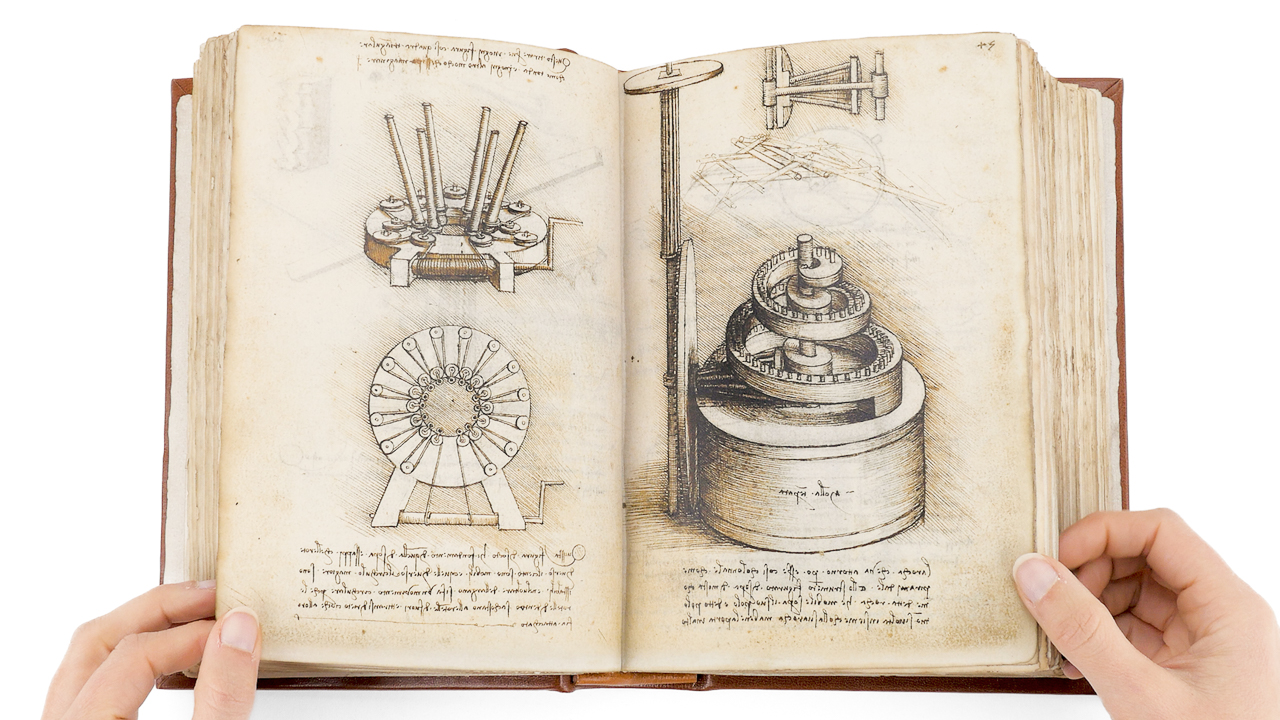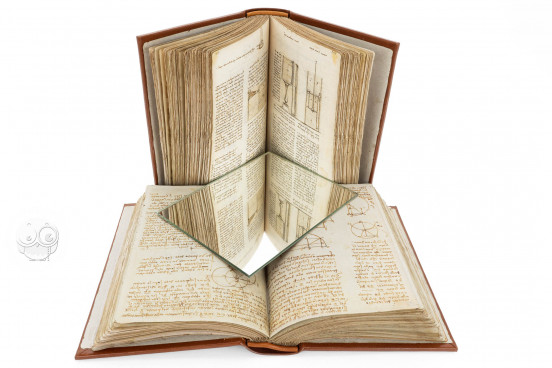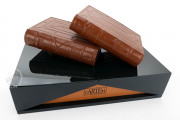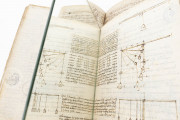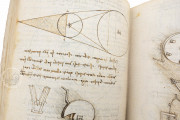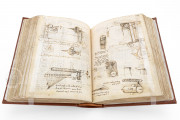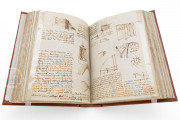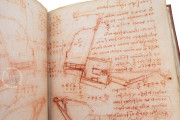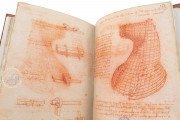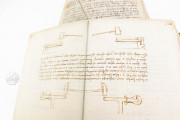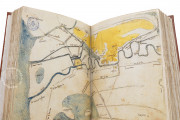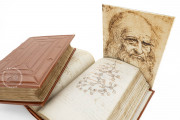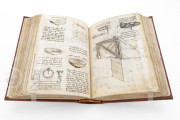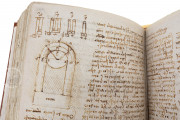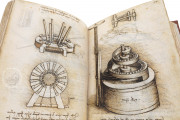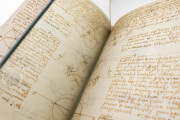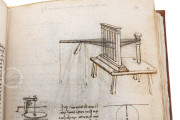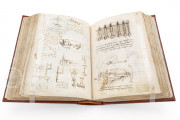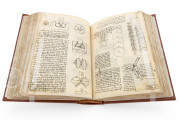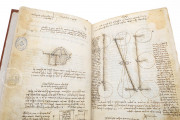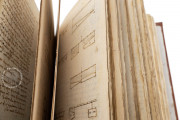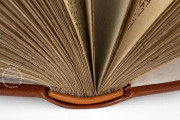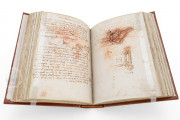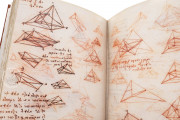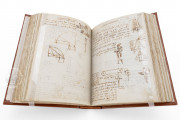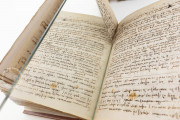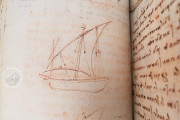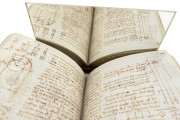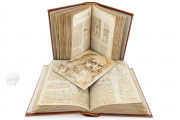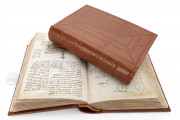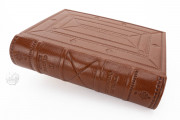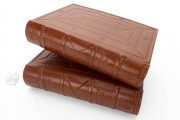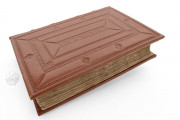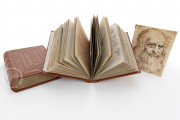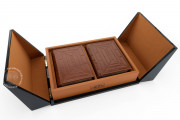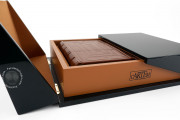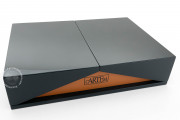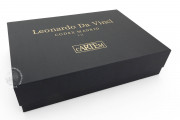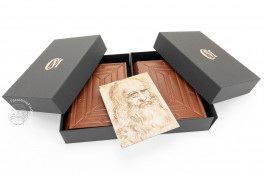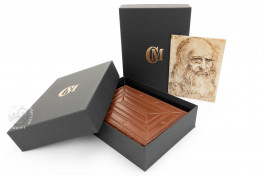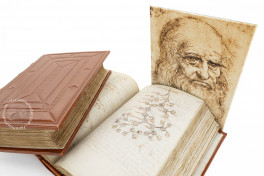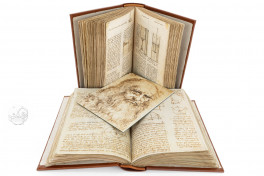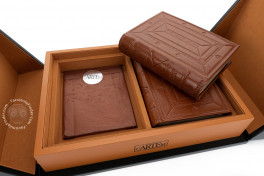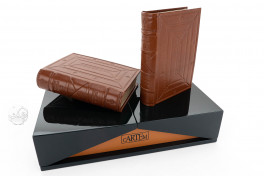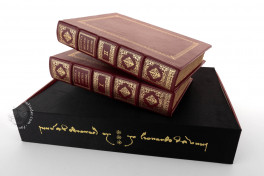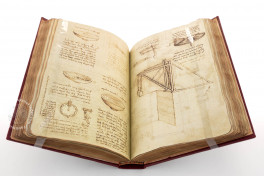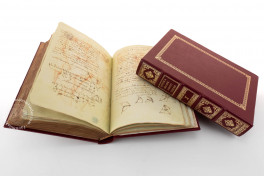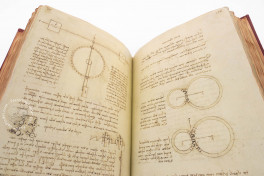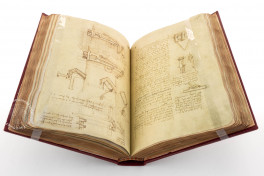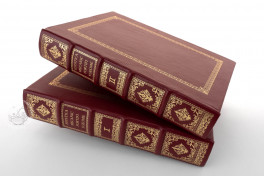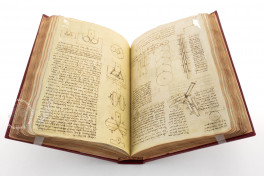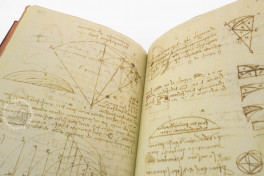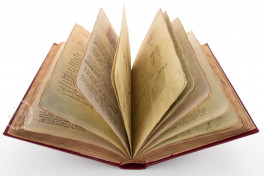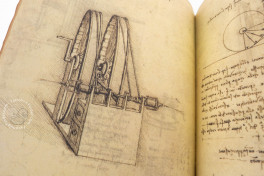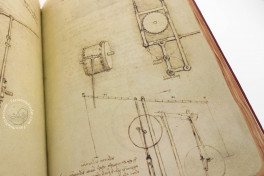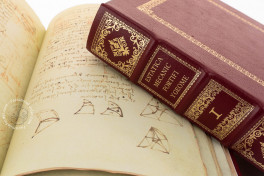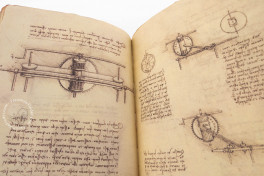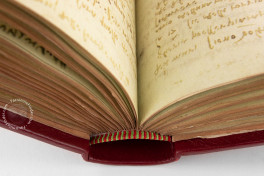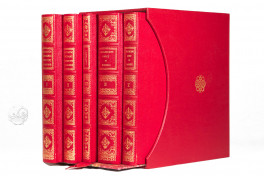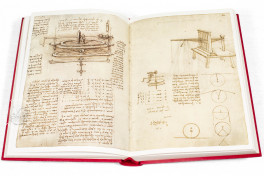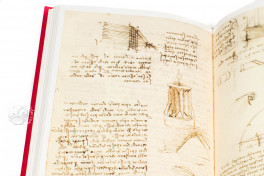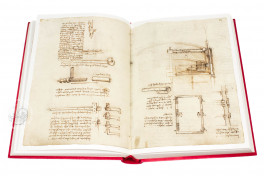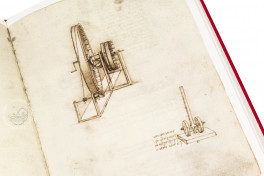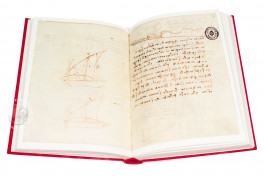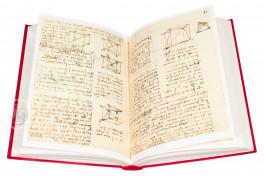The Madrid Codices are two manuscripts of drawings and extensive notes by Leonardo da Vinci in the collection of the Biblioteca Nacional de España, whose rediscovery in 1965 caused a sensation. They comprise sketches and notes on mechanical devices, practical and theoretical, as well as military equipment, geometry, optics, and painting. The notebooks date from the last decade of the fifteenth and the first decade of the sixteenth century when Leonardo was resident in Milan and Florence. Madrid Codex I is especially famous for its exquisitely finished drawings of machines and Codex II for notes on the casting of an equestrian monument to Francesco Sforza.
The manuscript known as Madrid Codex I (MS 8937) is in two parts, both dating from the 1490s, the first on elementary mechanisms and the second on theoretical mechanics. Madrid II (MS 8936) is more miscellaneous in content—with notes on fortifications, maps, and studies of optics and painting—dating from 1503-1505, as well as the pages devoted to the "Great Horse" dating from 1491-1493.
Machines both Practical and Imagined
The first portion of Codex I is concerned primarily with friction and the problems it creates in various machines. The drawings in this section are among the most precise and exquisite of Leonardo's oeuvre. Leonardo's ingenious solutions involving ball bearings abound on its pages. The second (chronologically earlier) section is more concerned with solving theoretical rather than practical issues of mechanics.
Notes for a Treatise on Painting
Codex II includes topographical sketches and multicolored maps of the Arno valley. There are also many notes devoted to the art of painting: most of these were marked by Francesco Melzi (d. 1570), a favorite pupil of Leonardo who compiled from the master's notebooks a Treatise on Painting that circulated in many manuscript copies in the sixteenth century.
Leonardo's Abandoned Sforza Horse
A cast bronze equestrian monument to Francesco Sforza (1401-1466), Duke of Milan, was commissioned from Leonardo by Francesco's fourth son Ludovico. It was to be the largest—eight meters high—cast bronze monument ever attempted. Madrid Codex II concludes with a section (fols. 141-157) of beautifully rendered red chalk drawings with annotations devoted to the planned casting of the horse, a project that was never carried out.
Mirror Writing
The extensive Italian-language text of the manuscripts, which includes a list of books in Leonardo's possession (Codex II, fols. 2v-3r) dating from around 1503-1504, is written in Leonardo's characteristic mirror writing, i.e., with the text written from right to left and appearing as conventional writing would in a mirror.
Leonardo executed most of the text and drawings with a thin quill and ink. His cursive is of uneven quality but legible throughout. Many of the drawings, even the most technical in content, are shaded with diagonal hatching.
From Leonardo's Favorite Pupil to the Biblioteca Nacional
Leonardo left all of his notebooks to Francesco Melzi. Although the evidence is entirely circumstantial, scholars have established that the Madrid Codices eventually came into the possession of the Italian sculptor Pompeo Leoni (d. 1608) and then Juan de Espina (d. 1642), who left his collection to the Spanish king Philip IV (1606-1665). The manuscripts were kept at the Palazzo Reale, bound in red morocco in the eighteenth century, and entered the Biblioteca Real (now the Biblioteca Nacional de España) sometime before 1830.
We have 4 facsimiles of the manuscript "Madrid Codices":
- Códices Madrid I-II (Library Edition) facsimile edition published by CM Editores, 2023
- Códices Madrid I-II facsimile edition published by CM Editores, 2023
- Manuscritos 8936 (Códex Madrid II) y 8937 (Códex Madrid I) facsimile edition published by Egeria, S.L., 2009
- I Codici di Madrid facsimile edition published by McGraw-Hill, 1974

